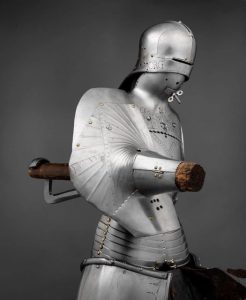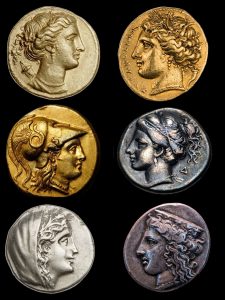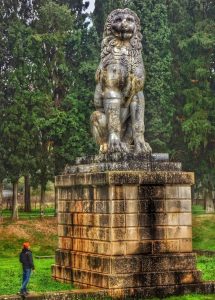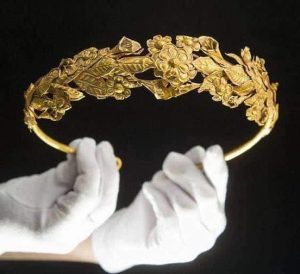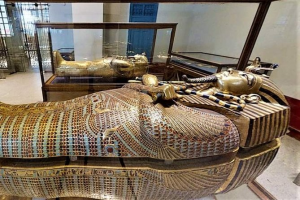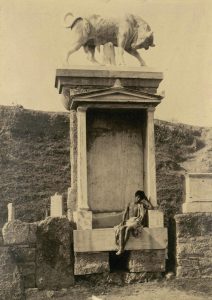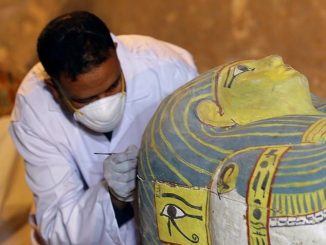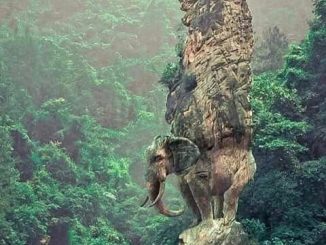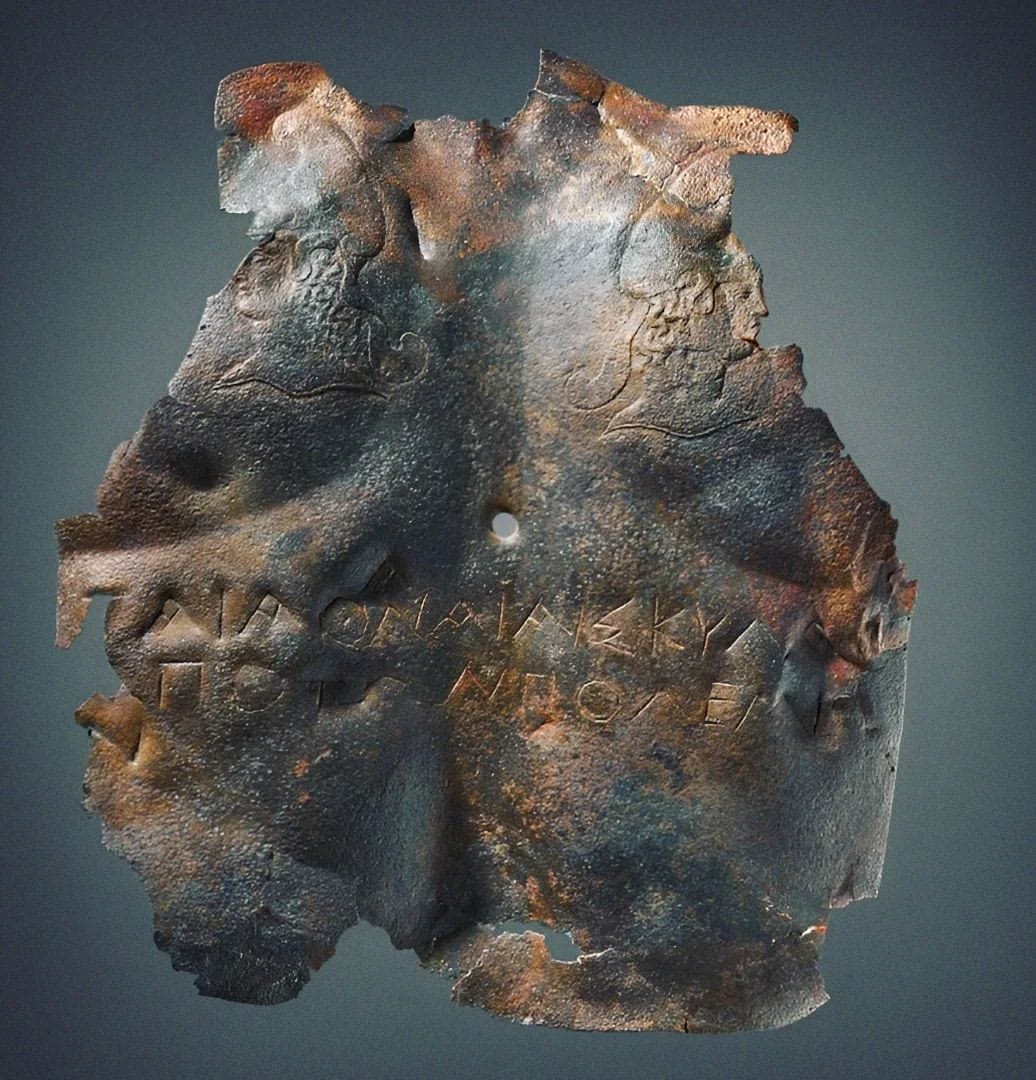
In the annals of ancient Greek craftsmanship, few artifacts evoke the same sense of awe and wonder as the Magna Graecia Bronze Cuirass. Dating back to the IV century BC, this extraordinary piece of armor stands as a testament to the skill and artistry of the ancient Greeks. Adorned with a votive dedication and intricately decorated with the opposing heads of the Dioscures—Castor and Pollux—wearing Phrygian caps, the cuirass serves not only as protective armor but also as a symbol of devotion and reverence. In this blog post, we delve into the fascinating history and symbolism of the Magna Graecia Bronze Cuirass, exploring its significance in the context of ancient Greek culture and religion.
The Dioscures: Mythology and Symbolism
At the heart of the Magna Graecia Bronze Cuirass lies the depiction of the Dioscures, the divine twin brothers of Greek mythology. Castor and Pollux were revered as symbols of brotherhood, heroism, and protection, making them popular figures in ancient Greek art and religion. The decision to adorn the cuirass with their opposing heads, each wearing a distinctive Phrygian cap, speaks to the symbolic significance of these mythical figures. The Phrygian cap, often associated with liberty and freedom, adds another layer of meaning to the cuirass, suggesting themes of valor and independence.
Votive Dedication: A Gesture of Devotion
In addition to its decorative elements, the Magna Graecia Bronze Cuirass bears a votive dedication, indicating that it was offered as a gift to the gods. Votive offerings were a common practice in ancient Greece, with individuals presenting gifts to deities as a gesture of gratitude, supplication, or devotion. The inclusion of such a dedication on the cuirass suggests that it held significant religious and spiritual significance for its owner, who likely commissioned the armor as a token of reverence or as an offering in exchange for divine favor or protection.
Craftsmanship and Artistry: A Testament to Greek Excellence
Beyond its symbolic and religious significance, the Magna Graecia Bronze Cuirass is a masterpiece of ancient Greek craftsmanship and artistry. The meticulous attention to detail, from the intricate facial features of the Dioscures to the precise rendering of their Phrygian caps, showcases the skill and expertise of the artisans who created it. The cuirass serves as a testament to the excellence of Greek metalworking techniques, as well as the cultural and aesthetic values of the society that produced it.
Unraveling the Mysteries: Archeological Insights
As with many artifacts from antiquity, the Magna Graecia Bronze Cuirass continues to intrigue and captivate archeologists, historians, and enthusiasts alike. Ongoing archeological research and analysis offer the promise of unraveling the mysteries surrounding this remarkable piece of ancient armor. By studying its craftsmanship, materials, and cultural context, scholars seek to gain a deeper understanding of its origins, purpose, and significance within the broader tapestry of ancient Greek civilization. Through their efforts, the Magna Graecia Bronze Cuirass continues to reveal new insights into the art, religion, and society of the ancient world.
